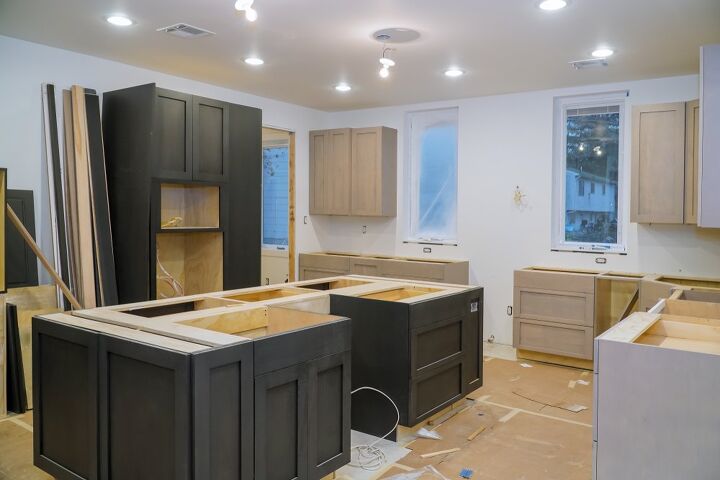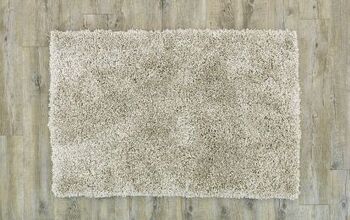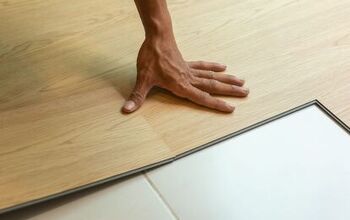Can You Put Cabinets On Top Of Vinyl Plank Flooring?

Modeling your kitchen has a lot of decisions that go along with it. You need to decide the best flooring that will go with your cabinets. However, can you put cabinets on top of vinyl plank flooring?
If the vinyl plank flooring is a floating floor then you cannot put cabinets on top of it. When you put cabinets on top of a floating vinyl floor, it can damage the flooring. The flooring can buckle and warp under such weight. If the vinyl plank flooring is glued down, then it can be safe to put cabinets on top of it.
Making the right decision when it comes to your kitchen is important. However, you need to know all the ins and outs first so that you do not make any mistakes.
Do You Need to Hire Cabinet Installers?
Get free, zero-commitment quotes from pro contractors near you.

The Two Types of Vinyl Plank Flooring
The term “vinyl plank flooring” takes into account two different types of flooring. It is important to know about these two types of flooring. Each type of flooring will react differently to cabinets being placed upon them.
The two types of vinyl plank flooring are “floating” and “glued-down” plank flooring. Why is it important to know this? Cabinets cannot be placed on floating plank flooring but can with glued-down flooring.
Before you learn about the differences between these floorings, you should take note of your kitchen. Look for the following things when considering your cabinets and flooring.
- Does the existing floor go underneath the cabinets?
- Can you apply molding to the bottom of the cabinets if there is a gap?
- Is the vinyl flooring already damaged?
If you are remodeling your kitchen, it is important to see what already exists. If the flooring already goes underneath the cabinets, it may be a glued-down floor.
However, you may see a gap between the cabinets and the flooring. You may be able to add molding of some sort to fix this aesthetic issue. Additionally, if you see the flooring is damaged around the cabinet, it means the flooring is probably floating.
Floating Plank Flooring
The first type of vinyl plank flooring is called “floating.” Floating plank flooring is not attached to the floor. Instead, they are attached to each other in an interlocking pattern.
This means that they tend to move with variations in temperature. This is part of the reason why cabinets cannot be placed on top of floating plank flooring.
The floor itself is called “floating” because it is not attached to the ground. However, since it is not attached to the ground, there are usually spaces near the wall.
Part of the reason many people use floating plank flooring is because of its easy installation. They are great floors for an imperfect floor space. However, they do pose some issues, as already mentioned.
Pros and ConsAs with any kind of flooring, there are pros and cons to floating plank floors. Some of the pros–such as its inexpensiveness–have already been mentioned. Pros include:
- Easy to install.
- Most vinyl floors are waterproof.
- Floating plank floors are less expensive than other types of flooring.
However, when you are using these in your kitchen, it is important to remember the cabinets. While these types of floors are easy to install, they do require at least a ¼ inch gap.
This gap is needed around the edge of the flooring for the changes in temperature that will “move” the floor. So, if you are installing a floating floor with cabinets, there will be a gap between the floor and the cabinet.
Since not everyone likes this aesthetic, it can be considered a con. Some cons include:
- Floating plank floors cannot extend beneath your cabinets.
- Floating plank floors need a gap around the outer edge.
- Floating plank floors can easily buckle or warp under the weight of the cabinets.
Therefore, if you want to have a floating vinyl plank floor, you need to install the cabinets first. You may need to cover the gap, however, with a putty of some kind.
Glued-Down Plank Flooring
The second type of vinyl plank flooring is called glued-down plank flooring. This type of flooring is attached to the floor beneath it.
Glued-down flooring utilizes either an adhesive tape to attach it or glue. This is different from a floating plank floor that is not directly connected to the floor upon which it rests.
Nevertheless, glue-down plank flooring is a popular choice for people modeling their kitchen. Unlike a floating floor, these types of floors do not expand and contract with changes in temperature.
Since they do not expand and contract, cabinets may be placed on top of them. Also, since they are firmly attached to the ground, they do not need a ¼ inch gap.
Pros and ConsJust like with the floating plank floor, a glued-down plank floor has its own set of pros and cons. This is especially true when it comes to pairing them with cabinets. Pros include:
- Can be used beneath the cabinets in the kitchen.
- There is no gap, so a glued-down floor looks aesthetically pleasing paired with cabinets.
- A glued-down floor is usually also waterproof and will not expand and contract with temperature changes.
However, even though you can indeed put cabinets on top of a glued-down floor, there are some cons. Cons include:
- You need to install the flooring first, which requires you to know what floor you want before installing the cabinets.
- Glued-down floors are more expensive than floating floors.
- Glued-down floors may require a professional to install them.
Therefore, if you want to use a glued-down floor with your cabinets, make sure to install the flooring first.
Both types of flooring, however, can have furniture placed on them. Soft pads placed beneath the furniture will help protect the floor from scuffs and scratches.
Do You Need to Hire Cabinet Installers?
Get free, zero-commitment quotes from pro contractors near you.

Related Questions
Must You Remove Cabinets to Fix Vinyl Flooring?
It is not always necessary to remove the cabinets to fix the flooring. If the heavy cabinets have been placed on a floating vinyl floor, you may see damage to the floor. If this is the case, you would have to remove the cabinet to fix the issue. However, if it is something minor, like the gap, you can fill this in with properly colored putty.
How Much Can Vinyl Flooring Hold?
Depending on the quality of the vinyl plank flooring, vinyl flooring can usually hold between 500 and 600 pounds. Furniture that can be moved and distribute its weight better, can be placed on vinyl flooring. However, cabinets are stationary and too heavy for floating floors.
Can You Put a Fridge on a Vinyl Floor?
Yes, you can put a fridge on top of a vinyl floor. However, it is best to know how much it will weigh when filled. Remember, vinyl flooring can usually hold up to 600 pounds. You want to make sure that the fridge weighs less than this and has protective pads underneath it.

Hannah DeMoss has been a writer for nearly a decade. Her passion for writing began years ago has continued to grow. Her expertise at home involves furniture restoration and other small DIY tasks. When not writing, Hannah enjoys the outdoors with her husband and pups, as well as traveling.
More by Hannah DeMoss



























